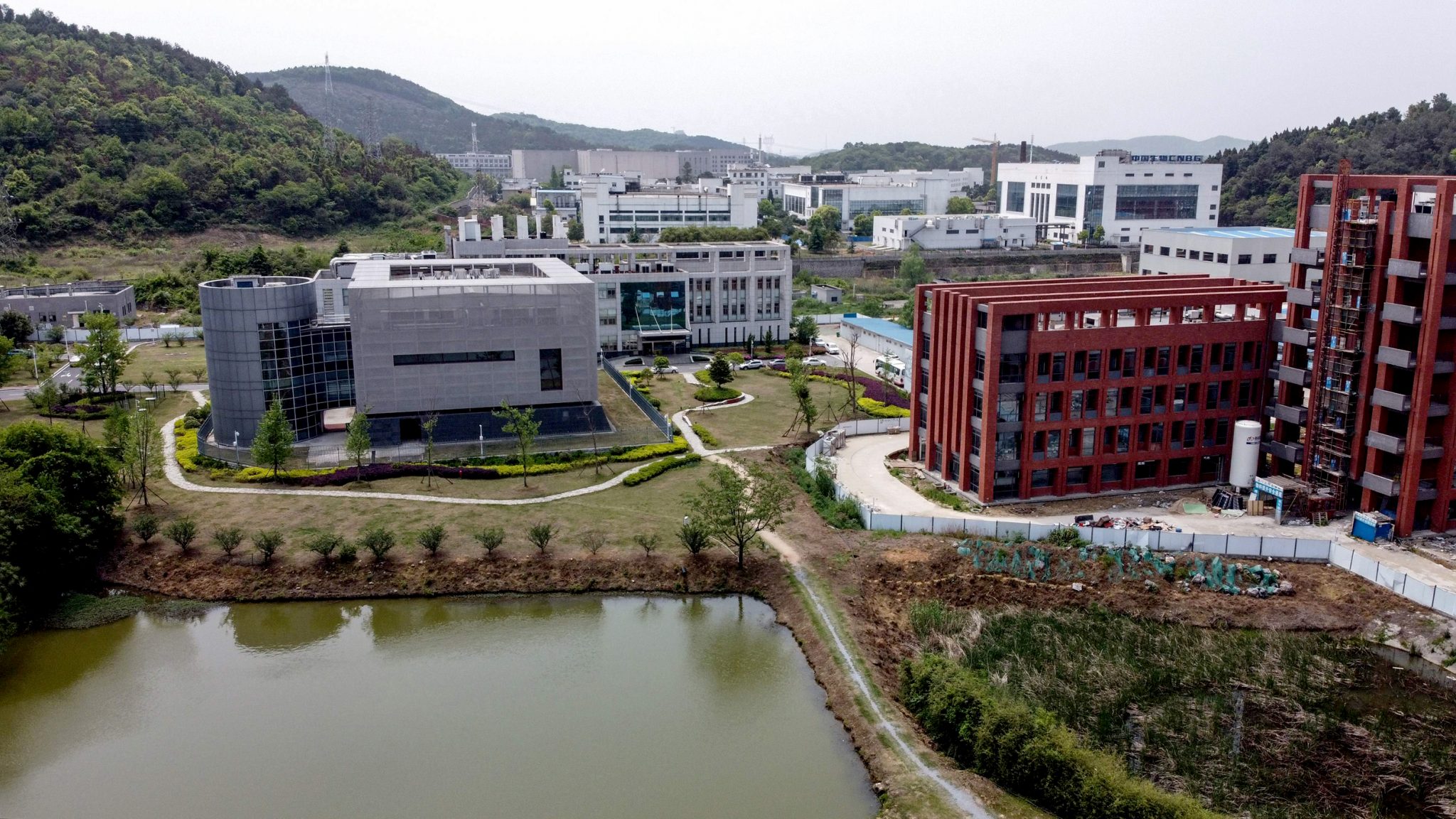Back on May 14th, 18 scientists wrote a letter to Science calling for a new investigation into the origins of COVID-19. Among their number was a gentleman named Ralph Baric, one of the world’s leading coronavirus experts.
Baric has been the subject of controversy over the last few months, given that he previously developed a method for engineering bat coronaviruses, and then taught that method to Dr Shi (the “Batwoman”) at the Wuhan Institute of Virology.
In a recent interview with the MIT Technology Review, he divulges some interesting details about how researchers work with coronaviruses in the lab, as well as how they should do such work.
Baric begins the interview by quashing the suggestion (made by Senator Rand Paul on the floor of the U.S. Senate) that he has ever created a “supervirus”. And later in the interview he states, “there’s really no strong and actionable data that argues that the virus was engineered”.
Okay, so he’s not convinced the virus was “engineered”. But what about the possibility that a virus collected from nature escaped from the Wuhan lab? Baric says, “I personally feel that SARS-CoV-2 is a natural pathogen that emerged from wildlife.”
And he gives the following rationale: “Historical precedent argues that all other human coronaviruses emerged from animals. No matter how many bat viruses are at the WIV, nature has many, many more.” However, this rather unconvincing argument has already been addressed by Zeynep Tufekci in the New York Times.
It’s hardly surprising that “all other human coronaviruses emerged from animals”, given that sophisticated research labs have only been around for a few decades. If we take the period “since the advent of molecular biology”, Tufekci notes, then a large number of outbreaks have been caused by lab leaks (including almost every case of SARS since 2002).
What Baric has to say about the nature of lab work is more interesting. When asked about safety standards he assures the interviewer, “We do everything at BSL-3 plus,” by which he means that he and his colleagues “wear impervious Tyvek suits, aprons, and booties and are double-gloved”.
He then confirms that “the Chinese have done a lot of their bat coronavirus research under BSL-2 conditions”. (Note that BSL-2 has been compared to the safety level of a dentist’s office.) And as Baric notes, “lab-acquired infections occur much more frequently at BSL-2.”
When asked why he signed the letter calling for a new investigation, Baric states, “There must be some recognition that a laboratory infection could have occurred under BSL-2 operating conditions.” And he goes on to say, “If you study hundreds of different bat viruses at BSL-2, your luck may eventually run out.”
The interview with Baric contains various other insights, and is worth reading in full.












To join in with the discussion please make a donation to The Daily Sceptic.
Profanity and abuse will be removed and may lead to a permanent ban.
The Chinese are good – real good. The virus they leaked in late 2019 manged to work its way into sealed water quality samples taken in early 2019. Damn, that is good. And all with one BSL-4 laboratory.
The US has 100s of BSL-4 bioweapons research labs outsourced around the world and the Chinks have beaten them to it. No wonder the US is pissed.
In Brazil too, but those samples were tested using PCR and may just be false positives.
Aren’t they all?
Data acquired using PCR is worthless if it can’t be backed up with actual isolation of the virus in question.
Sean Penn’s turned batty
Penn plays the hard man on jabbing By Suzie Halewood
https://www.conservativewoman.co.uk/penn-plays-the-hard-man-on-jabbing/
Stand in South Hill Park Bracknell every Sunday from 10am meet fellow anti lockdown freedom lovers, keep yourself sane, make new friends and have a laugh.
Join our Stand in the Park – Bracknell – Telegram Group
http://t.me/astandintheparkbracknell
Hollywood’s whores all made their pact with the devil for success, now they are being called on to honour that pact.
http://fashiontribes.typepad.com/main/images/spenn_sink.jpg
Turned? He’s been batshit forever, hence he fits right in with Hollwierds abuse culture.
Big mystery is where all these pharmaceutical companies got there spike proteins from to manufacture the vaccines now in use within days of the Wuhan bat-lady issuing a description – did they derive from Chinese virus samples or were they synthetic?
They are synthetic. A gene sequence which apparently you can receive over the phone. Then generate on your computer. That is the technology.
There were no Chinese samples. There probably still isn’t.
His “reasoning” is absurd and doesn’t even bother to take in any of the evidence that this is a manufactured virus. Why will nobody come clean and simply say “We got it wrong”? Big money.
Any comment from experts working in the field has to be considered in the light of this basic truth:
“If the pandemic started as part of a lab leak, it had the potential to do to virology what Three Mile Island and Chernobyl did to nuclear science“.
Tucker: Why did they lie to us for so long
Why was he funding such a shoddy operation, not to mention he led the fake WHO inquiry which cleared them. On 28 October 2019 while the Military Games were opening in Wuhan the real military games were happening at Event 201 in NY (including souvenir Coronavirus cushion): something to treasure while economy melted and people died
https://www.ageofautism.com/2020/01/center-for-health-security-coronavirus-pandemic-event-201-highlight-video.html
If you have lots of RNA viruses floating around in a relatively small area alongside tools that accelerate viral evolution such as humanised mice, then chimeric recombination will happen at a faster rate.
As ever you only need to get one arrow past the shield.
From buying
Cheap
Chinese
Crap
Products
attention to detail and quality control seem to be weak spots… Applied to a Lab that studies animal virus DNA and i ask “what could go right”?
Recent CNN interview with Bill Gates:
Anderson Cooper:
“How important do you think it is to understand how this happened, how it started, I mean is that critical in terms of preventing it into the future?”
Bill Gates:
“No, the source isn’t gonna change the need for masks and vaccines and the need to have a very different regimen so that all countries could get on top of cases very quickly and be more like Australia.”
So the fund giver to gain of function research doesn’t want the origins exposed, doesn’t think it will be of any use, even though knowing specific gain of function attributes would surely be of colossal help to virologists trying to remedy Covid-19. He also doesn’t think the vaccine makers should have to release the full list of ingredients of their Frankenshots, which makes informed consent by any person impossible.
No, instead Bill Gates wants you injected, locked in your home and harassed by police and military.
There is no Sars-Cov-2, that’s the key these psychopaths want kept hidden, it’s the spike protein itself causing the issues, the protein alone causes the symptoms of Covid-19 and their (final) solution is to make every cell in your body manufacture the damned thing.
Ah Here’s the little boy Anderson with his Mother Gloria Vanderbilt (yes that one) under a dubious shrine.

Why call yourself Daily SCEPTIC if all you are going to do is back one narrative? The reality is that there is a lot of weight to several arguments, one of which is that all we had was flu season re-branded coupled with some extremely dodgy practices on the wards and in the nursing homes which caused deaths in certain areas where these practices were most employed. Denis Rancourt did a very interesting presentation about distribution of death for Doctors For Covid Ethics symposium link below.
It would be good to see some true scepticism, where all potential scenarios are investigated, one of which is that there is no novel virus and that the whole charade, from start to finish, has been completely false and based on nothing but deliberately engineered false positives via a transparently fraudulent PCR testing regime, and re-labelling of formerly common illnesses under a new banner covering all respiratory conditions and more. Interestingly, Reiner Fuellmich did an interview where it was confirmed that he has a whistleblower from PCR machine manufacturing who will testify in court that orders for thousands of PCR machines started coming in around 2017/8, totally out of the blue.
Scepticism demands investigation, not tr
PROF DENIS RANCOURT, DOCTORS FOR COVID ETHICS, DAY 1
https://www.bitchute.com/video/6HR0sDqvUx9i/
Here is the MHRA confirming the vaxxs are formulated from computer models:
EMAIL EXCHANGE WITH UK MHRA – Exposing the genomic sequence of SARSCov2
https://www.fluoridefreepeel.ca/email-exchange-with-uk-mhra-exposing-the-genomic-sequence-of-sarscov2/
Confirmation that our immune system already knew the “novel” virus:
Doctors For Covid Ethics Symposium 7/30/21 – Dr. Sucharit Bhakdi
https://www.bitchute.com/video/2OJocjAu0ORG/
“contains various others insights” … ie whoppers.
And we’re meant to believe him now why?
Baric begins the interview by quashing the suggestion (made by Senator Rand Paul on the floor of the U.S. Senate) that he has ever created a “supervirus”. And later in the interview he states, “there’s really no strong and actionable data that argues that the virus was engineered”.
So Mr Baric, explain why your involvement in – part – US tax payer funded gain of function research with a Coronavirus purportedly occurring in Chinese bats, which allegedly leaped to humans but left no trial throughout China; explain how SARS COV 2 contains elements of genetic code that do not , apparently, appear in all other Coronaviruses; and explain how it became intra human transmissible just before it appears to have leaked?
I am keen to understand, dontcha know?
Perhaps “you would say that” to the statement in italics
Baric is NOT an expert…..he is a CORRUPT EVIL LIAR complicit in genocide
What I am certain of is the Chinese students brought it into Britain. I remember there were Chinese students on the bus February 2020 and soon after I had what I though was a very bad flu unable to stop coughing, obviously Whuflu before we were told about it
People in various parts of the UK Europe and USA were suffering from a covid-like illness from October 2019. I got it along with a bunch of others around December 2019. Some evidence from sewage and blood samples it was around even earlier.
One thing’s for certain sure, whatever happened we will never know.
These vile horror labs working on gain of function are, no doubt, ticking time bombs. But it’s not clear whether the Covid mania has an actual single virus released from Wuhan as its cause. No Covid 19 viral profile has been isolated, despite requests from labs.
All that was needed to create the power grab was to spread fear and censor contrary information, by whatever means necessary. That’s been done relentlessly, with the goal of getting the fake vaccine, the spike protein generating mRNA programme, into as many bodies as possible.
This way, the power hungry elites behind the co-ordinated Covid push don’t risk deadly blow back of a genuinely dangerous virus on themselves, but still attain the domination (and de-population) they crave.